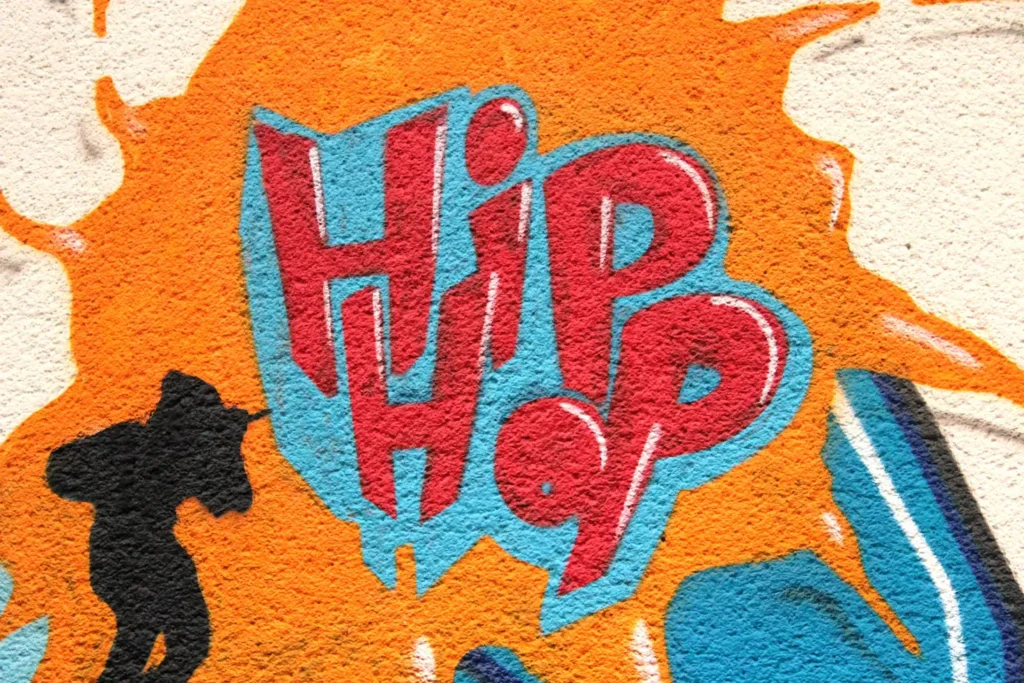
Table of Contents
What are the four pillars of hip hop music?
Examine what makes hip-hop music unique and how it has influenced popular culture. Discover more about the four main components of hip-hop: graffiti, b-boying, DJing, and rapping. Learn about the evolution of hip-hop and its influence on society and culture across time.
Hip-hop, with its roots in the Bronx and its global impact, continues to influence music business trends and provide voiceless people a platform. Explore the realm of hip-hop and gain insight into its lasting appeal and importance within the music business.

What is basic rock music?
Hip-hop music has shaped the music business for many years and has become a global cultural phenomenon. Hip-hop, which began in the Bronx, New York, in the 1970s, has developed into a diverse genre that incorporates aspects of dance, music, fashion, and art. We’ll look at what makes hip-hop music unique in this blog article and how it has influenced popular culture.
The Four Pillars of Hip-Hop
Four basic components, also known as the “four pillars” of hip-hop, serve as the foundation for hip-hop music:
- Rapping: The vocal technique that characterizes hip-hop is rapping, sometimes referred to as MCing or emceeing. It is speaking in rhyme and rhythm over a beat, frequently with wordplay, narrative, and social criticism thrown in. Rappers cover a broad range of subjects, such as societal concerns, personal challenges, and cultural identity, in their rhymes by expressing their ideas, experiences, and viewpoints.
- DJing: Choosing, arranging, and modifying recorded music is the art of DJing. Because they provide the rhythms and instrumentals that rappers rap over, DJs are essential to the hip-hop genre. In addition, they employ mixers, turntables, and other apparatuses to produce distinctive noises and effects, such sampling and scratching. Hip-hop music gains depth and texture from the artistic expression of DJing, which goes beyond just technical proficiency.
- B-boying/B-girling: B-boying, often referred to as breakdancing, is a vibrant, acrobatic dance form that got its start in tandem with hip-hop music. Breakdancers that specialize in power techniques, precise footwork, freezes, and tricks are known as B-boys and B-girls. B-boying is a method to interact with the music and bring the energy and rhythm of hip-hop to life in addition to being a means of self-expression.
- Graffiti: Associated with hip-hop culture, graffiti art is a visual form of expression. Graffiti artists produce elaborate and colorful murals, tags, and other pieces using spray paint, markers, and other materials. Graffiti contributes a visual artistic aspect to the hip-hop movement and functions as a medium of communication, frequently expressing social and political issues.
Innovation and Evolution
Hip-hop has developed and grown over time, even if its four pillars serve as a basis. Hip-hop music has a vast array of sub-genres and styles as a result of hip-hop musicians pushing limits, experimenting with new sounds, and incorporating varied musical influences.
Hip-hop has welcomed innovation and new technology, from the boom-bap sounds of the 1980s to the trap and mumble rap of today. Producers have created distinctive sounds and beats that characterize various periods of hip-hop by utilizing sampling, drum machines, synthesizers, and digital production techniques.
Social and Cultural Impact
Hip-hop music has had a significant influence on society and popular culture in addition to shaping the music business. It has given disadvantaged voices a stage on which to express themselves and raise awareness of social concerns like racism, poverty, and injustice via the work of artists. Hip-hop musicians are utilizing their music to question the current quo and spur change; as a result, hip-hop has emerged as a potent narrative and activist medium.
Hip-hop has also impacted vocabulary, attitudes, and fashion trends. Hip-hop has impacted mainstream society, bridging regional and cultural divides with its loose fit and distinctive lexicon, as well as its usage of sneakers and slang.
Conclusion
Hip-hop music is a vibrant, prominent genre that is still growing and enthralling listeners everywhere. Rapping, DJing, b-boying, and graffiti are among of its distinctive traits that have molded the culture and added to its ongoing appeal. Hip-hop is still a major force in the music business and a reflection of the experiences and goals of both its artists and audience as long as it keeps pushing the envelope and shattering barriers.
Check out this blog related to this blog
Check our featured blog
What Defines Rock Music?
Can AI Replace Human Musicians? Exploring the Future of Music Creation
Can AI replace human artists? Artificial intelligence in music Can AI Replace Human Musicians? Introduction Artificial intelligence in music (AI) is swiftly changing multiple industries, and the music sector is no different. The incorporation of AI into music production, songwriting, and live performance has opened the door to inventive practices and technologies that question conventional…
How to Use Vocal Compressor?
How to Use Vocal Compressor? Vocal compression is an important step in music production for creating a refined sound. This article covers everything from how to set up your compressor and dial in the optimum settings to advanced techniques like as parallel and side-chain compression. Learn how to control dynamic range, establish voice presence, and…
Difference Between Home Studio and Professional Studio
Difference Between Home Studio and Professional Studio Discover the fundamental distinctions between home and professional audio production facilities. Learn about each type of studio’s equipment, technology, and expenses, as well as the benefits and drawbacks. Whether you’re a hobbyist or a professional, this guide will help you select the best configuration for your requirements. Introduction…

Leave a Reply